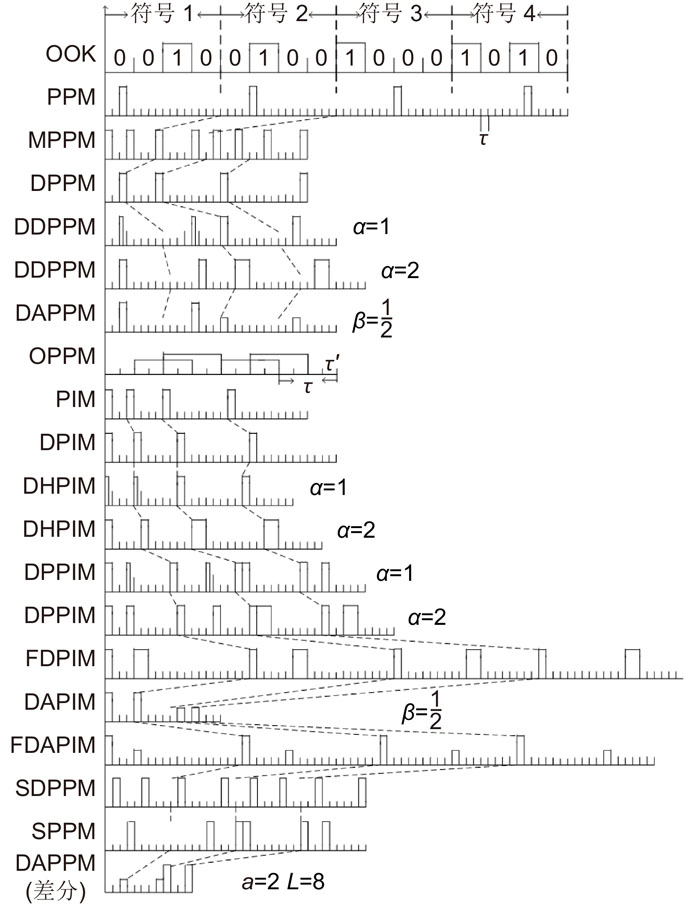Xizheng Ke, Jingyuan Liang, Dongsheng Xu, Jiafan Wang. Research progress of pulse position modulation technology in optical wireless communication[J]. Opto-Electronic Engineering, 2022, 49(3): 210387-1
Search by keywords or author
- Opto-Electronic Engineering
- Vol. 49, Issue 3, 210387-1 (2022)
![The symbol structure of different modulation schemes[73]](/richHtml/gdgc/2022/49/3/210387/1_210387-1.jpg)
Fig. 1. The symbol structure of different modulation schemes[73]
![The average symbol length of different modulation schemes[67]](/richHtml/gdgc/2022/49/3/210387/1_210387-2.jpg)
Fig. 2. The average symbol length of different modulation schemes[67]
Fig. 3. The bandwidth requirement of different modulation schemes[67]
Fig. 4. The bandwidth efficiency of different modulation schemes[67]
Fig. 5. The bandwidth requirement of DAPPM[71]
Fig. 6. The bandwidth requirement of OPPM[61]
Fig. 7. The average transmit power of different modulation schemes[67]
Fig. 8. The SER of different modulation schemes under AWGN channel[73]
Fig. 9. The average SER of different modulation schemes under weak turbulence channel[73]
Fig. 10. The average SER of different modulation schemes under moderate turbulence channel[73]
Fig. 11. The average SER of different modulation schemes under strong turbulence channel[73]
Fig. 12. The normalized transmission capacity of different modulation schemes[60]
Fig. 13. The average channel capacity under turbulence channel with Gaussian distribution[60]
Fig. 14. The average channel capacity with K distribution in strongly turbulent channels[75]
Fig. 15. The average channel capacity of different modulation schemes under weak turbulence[73]
Fig. 16. The average channel capacity of different modulation schemes under moderate turbulence[73]
Fig. 17. The average channel capacity of different modulation schemes under strong turbulence[73]
Fig. 18. Error rate curve along with the change of signal to noise ratio[75]
Fig. 19. BER curve at receiver[76]
Fig. 20. The heavy rain weather SER changing with SNR curve[75]
Fig. 21. Moderate rain weather SER changing with SNR curve[75]
Fig. 22. Light rain weather SER changing with SNR curve[75]
Fig. 23. Different weather BER curve along with the change of SNR[75]
Fig. 24. Frequency response curves at different bias currentsI0[77]
Fig. 25. Pulse response curves at different bias currents I0[77]
|
Table 1. The average symbol length, bandwidth requirement and average transmit power

Set citation alerts for the article
Please enter your email address



